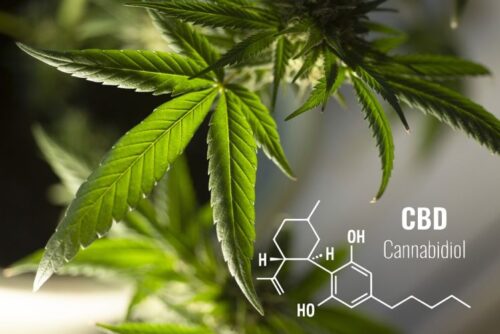Imagine you’re a gold miner during the 1849 Gold Rush, sifting through streams for nuggets of precious metal. But instead of gold, you’re searching for knowledge about cannabinoids, the bioactive compounds found in cannabis. You’ve likely heard about CBD, or cannabidiol, a well-known cannabinoid celebrated for its therapeutic properties. But there’s another cannabinoid, CBG, or cannabigerol, that’s less well-known but arguably just as important.
This article will delve into the unique properties of both CBD and CBG, their health benefits and uses, and how they interact with the human body. By understanding the differences between these two compounds, you’ll be better equipped to make informed decisions about your health and wellness.
So let’s start panning for those nuggets of cannabinoid knowledge.

Understanding Cannabinoids
You might not believe it, but understanding cannabinoids could be more complex than cracking the Da Vinci code! These powerful compounds are found in cannabis plants, and while most people are familiar with THC, there’s more to the story.
The cannabis plant produces over 100 different cannabinoids, including cannabidiol (CBD) and cannabigerol (CBG).
CBD and CBG are two of the most significant cannabinoids, and they’re often mistaken for one another due to their similar names. However, they’re quite different. Both are non-psychoactive, meaning they won’t get you high, but they interact with your body’s endocannabinoid system in unique ways.
CBD is known for its potential therapeutic benefits, including pain relief, reducing anxiety, and improving sleep. On the other hand, CBG is more of a wildcard. It’s often referred to as the ‘mother of all cannabinoids,’ as it’s the precursor to other cannabinoids, including CBD and THC.
While both CBD and CBG have a lot to offer, it’s essential to understand their differences to make the most informed decisions about your health and wellness.
Now, let’s dive deeper into the unique properties of cannabidiol.
The Unique Properties of Cannabidiol

Let’s explore the distinctive properties of cannabidiol (CBD), a compound renowned for its countless benefits and therapeutic potential. CBD, commonly known as a non-psychoactive cannabinoid, has garnered significant attention due to its various health-promoting effects.
In contrast to its well-known counterpart, THC, CBD does not produce a “high” when consumed. It interacts with the body’s endocannabinoid system in a unique manner, modulating receptors without directly binding to them. This interaction is responsible for CBD’s myriad health benefits without causing intoxication.
Extensive research has unveiled CBD’s potential in managing a wide range of health conditions.
It has been studied for its anti-inflammatory, analgesic, and anti-anxiety properties, among others.
The FDA has even approved CBD for treating specific forms of epilepsy due to its effectiveness. Moreover, there is evidence to suggest that CBD can aid in addiction treatment by reducing cravings and withdrawal symptoms.
The incredible versatility of CBD in promoting health and wellness is truly remarkable. However, CBD is not the only cannabinoid with such unique properties. Let us now delve into another captivating compound within the realm of cannabis: cannabigerol (CBG).
CBG, like CBD, also possesses fascinating therapeutic potential. As we explore the lesser-known CBG, we come to appreciate the diverse properties of cannabinoids and their potential in supporting well-being. Keep in mind that accessing these compounds may require a Therapeutic Cannabis Permit in certain regions.
The Unique Properties of Cannabigerol
Much like an unsung hero, cannabigerol (CBG) quietly contributes to the cannabis plant’s therapeutic potential, serving as the chemical parent to other cannabinoids and demonstrating its own unique health benefits. As it’s present in lower concentrations than CBD, it often doesn’t get as much attention.
But don’t let its relative obscurity fool you; CBG holds its own when it comes to potential health benefits. CBG is non-psychoactive, which means it doesn’t produce the ‘high’ associated with cannabis use. This opens up possibilities for its use in a wide range of health applications without the mind-altering effects.
In addition, preliminary research suggests that CBG can interact with certain receptors in the body that affect inflammation and pain.
Though both CBD and CBG share some similarities, they also exhibit unique characteristics. CBG, for instance, appears to have a more direct interaction with the body’s cannabinoid receptors. This means it could potentially offer different, and possibly more potent, therapeutic effects compared to CBD.
As our understanding of these unique compounds expands, it’s clear that CBG’s potential shouldn’t be underestimated. This sets the stage for exploring the health benefits and uses of cannabidiol in the next section.
Health Benefits and Uses of Cannabidiol
Cannabidiol’s potential for promoting health and wellness shouldn’t be overlooked, as it’s been linked with a range of benefits. CBD, as it’s more commonly known, interacts with your body’s endocannabinoid system, influencing receptors to maintain internal balance and stability. In this way, it fosters a sense of calm and relaxation, easing stress and potentially mitigating the symptoms of anxiety disorders.
Additionally, CBD is believed to have anti-inflammatory properties. It’s suggested that it can help manage chronic pain, particularly when it’s linked to conditions like arthritis or multiple sclerosis.
By reducing inflammation, CBD may alleviate pain and improve mobility, enhancing your overall quality of life.
Moreover, preliminary research indicates that CBD could have neuroprotective attributes. This means it might protect nerve cells from damage, which is particularly relevant in neurodegenerative diseases such as Alzheimer’s and Parkinson’s.
While the aforementioned benefits are promising, it’s important to remember that more research is necessary to fully understand CBD’s efficacy and safety. As we begin to delve deeper into the world of cannabinoids, you’ll discover another intriguing compound: cannabigerol, which also offers a host of potential health benefits.
Health Benefits and Uses of Cannabigerol
Like a lesser-known actor stepping out of the shadows and into the spotlight, cannabigerol, or CBG, is making its debut on the wellness stage with a variety of potential health benefits that are starting to turn heads.
Derived from the cannabis plant, CBG is a non-psychoactive cannabinoid that is less abundant than its more famous cousin, CBD. But don’t let its scarcity fool you; CBG is gaining attention for its potential therapeutic properties.
Early research suggests that CBG may have potent anti-inflammatory effects, making it a potential ally against conditions like inflammatory bowel disease and glaucoma. It’s also showing promise as a potential neuroprotectant, which could have implications for neurodegenerative diseases like Parkinson’s and Alzheimer’s. Additionally, studies indicate that CBG may have antibacterial properties and could even be effective against drug-resistant strains of bacteria.
While these findings are still preliminary, they highlight the breadth of potential applications for CBG in the health and wellness sphere.
As science continues to explore the capabilities of this cannabinoid, we can anticipate a deeper understanding of its effects.
Now, let’s delve into a comparison of the impacts of CBD and CBG on the human body.
Comparing the Effects on the Human Body

You might be curious about how these two cannabinoids interact with your body and what effects they might have. CBD, or cannabidiol, is known for its calming and anti-inflammatory effects. It interacts with your body’s endocannabinoid system, primarily affecting the CB1 and CB2 receptors. This interaction can help alleviate symptoms of various conditions, such as anxiety, chronic pain, and epilepsy.
On the other hand, CBG, or cannabigerol, is considered a precursor to other cannabinoids, including CBD and THC. Its interaction with the human body is slightly different. Here are a few key distinctions:
- CBG seems to interact directly with the CB1 and CB2 receptors in the brain. This interaction might be responsible for its potential neuroprotective effects.
- Unlike CBD, CBG has been found to potentially inhibit the uptake of a neurotransmitter called GABA, which can lead to muscle relaxation and a feeling of peace and tranquility.
- Research suggests that CBG might have antibacterial properties, particularly against MRSA.
While both cannabinoids exhibit potential health benefits, it’s important to consider these differing effects when choosing a product. Remember, the research is ongoing, and the full understanding of these cannabinoids and their effects on the human body is yet to be fully uncovered.
Conclusion
So, you’ve now got the lowdown on CBD and CBG. They’re two peas in a pod, hailing from the same plant family, yet they’re unique in their properties and benefits.
Remember, it’s not a one-size-fits-all scenario. You might find one suits your needs better than the other.
Keep exploring, and you might just hit the jackpot in your pursuit of health and wellness.





